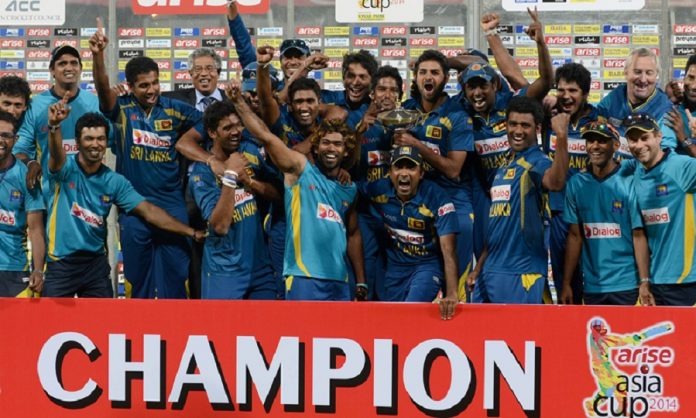Much has been said (and at times done) to circumvent what appears to be an insurmountable decline of Sri Lanka Cricket; a beloved sport of Sri Lankans, a sport we take pride in and one which has constantly been our respite even during the tumultuous period of a 30-year-old civil war.
Freehit contributor – Pradeep Kariyawasam
It has been a sport that we’ve not only mastered and excelled in but, seen composed of the multi ethnic society that we are, working as a team, devoid of racial undertones, towards a common goal. How then did we get here? That is a question for another day. With the ICC World Cup on the horizon, here’s how I feel, we can get out of it!
Analysis of the Hathurusinghe Report
Chandika Hathurusinghe, the prolific change maker of Bangladesh was commissioned by SLC to reinvigorate the national side in the wake of a number of defeats and the retirements of stalwarts. While his methods and remuneration has been discussed ad nauseam, what I believe needs to be the primary takeaway to move forward, are his reports.
As part of his contractual obligations to SLC, Hathurusinghe was required to prepare two reports, essentially outlining the status of his team. While these reports have not been made public, systemically, whoever takes over, should take this as ‘Priority One’. What Hathurusinghe saw in his team as merits and demerits are not in question. That is fact. What he decided to do with that, is questionable.
Therefore, Step 1, would be to analyze the Hathurusinghe reports and break them down to issues on Composition, Competency, Merits and Demerits. Implementing an action plan therein, should be handed over to a team with unfettered authority (one that is outside of political oversight). I believe that, morale is as much a part of development and moving forward as the actual ‘doing’. Morale, not just of the national team but of the fans as well. The national team thrives when their nation is proud and vice-versa. Thus, the team that’s setup to implement the change, must be one that not only the national team respects but also one that the nation admires. A team of past captains, perhaps?
The Graham Ford Factor
It is said that a disaster occurs not when a solitary wrong move leads to failure but when a series of unfortunate events culminate in it. The state of Sri Lanka Cricket, is no different. The team, its players and coach are as much a factor in winning and/or losing as its administration.
Having said that, the flip side is, a series of fortunate circumstances can yield miracles — case in point, the 1996 World Cup victory. It wasn’t a happy accident by any means but had but one factor in the composition of the team, its coach or the administration of the time had been different, we may never have had an opportunity to line the streets to welcome our victors home.
The last we saw that kind of momentum Dav Whatmore brought to the team, was when Graham Ford coached us. His team at the time, no longer exists. The administration is a far cry from that time. But, the team he ‘would have’ inherited, still remains to counsel the current youngsters. The administration is renewable, changeable. In the vacuum left by Hathurusinghe, Ford may well do (part of) the trick. We no longer need a change maker, we need a ‘win’ maker.
Building a competitive composition
The game, over the years has changed dramatically. The fast have gotten faster, the spins deceive greater. It is, by far one of the golden ages of cricket, in terms of the skill (and commercial viability).
One fundamental characteristic that has emerged is how, by and large, international teams are relying less and less on a static, non-conformist composition of their teams. Gone are the days, for instance, where we would identify an entire team based on their bowling prowess, or just their batting vigor. On the contrary, team compositions have become more fluid, adapting themselves to whatever tour they are a part of.
This however has yet to hold water with Sri Lanka Cricket. The reason, I believe, is the lack of a viable and diverse pool of players and players ‘in waiting’. What we need now is not a good-enough team but one that transforms when necessary. Building this, depends on as much understanding the requirement as harnessing talent, the latter of which is easier said than done.
Restructuring Sri Lanka Cricket
Talent and perseverance is only effective when allowed to be so. More often than not, what history has revealed is that the one constant in not just Sri Lanka Cricket but our nation as a whole, is not the lack of talent but the lack of motivation, guidance and opportunity provided to that talent by those in power.
While it is undoubtedly the more far-reaching and time consuming solution to a systemic and festering problem, a complete overhaul of the administration of Sri Lanka Cricket and the reassessment of its Constitution is a must. While safeguards must be put in place to prevent those with nefarious intent from fulfilling their own, as opposed to national, interests; current and former players must be made much more active stakeholders in the process. It is only then that we can truly consider that measures have been put in place to prevent yet another ‘rut’ like that which we are in, today.
Sri Lanka is a country yearning, wanting to be at the forefront of a fast-paced world. We excel at a few things globally, of which, up until recent times, Cricket being the dominant factor. Our players, the team, were not just feared and respected, they were revered and emulated by others. We may be 9 down with an insurmountable 80+ to score. But if the Kingsmead Oval 153* by Kusal Perera has taught us anything — there’s still a game left to play!














